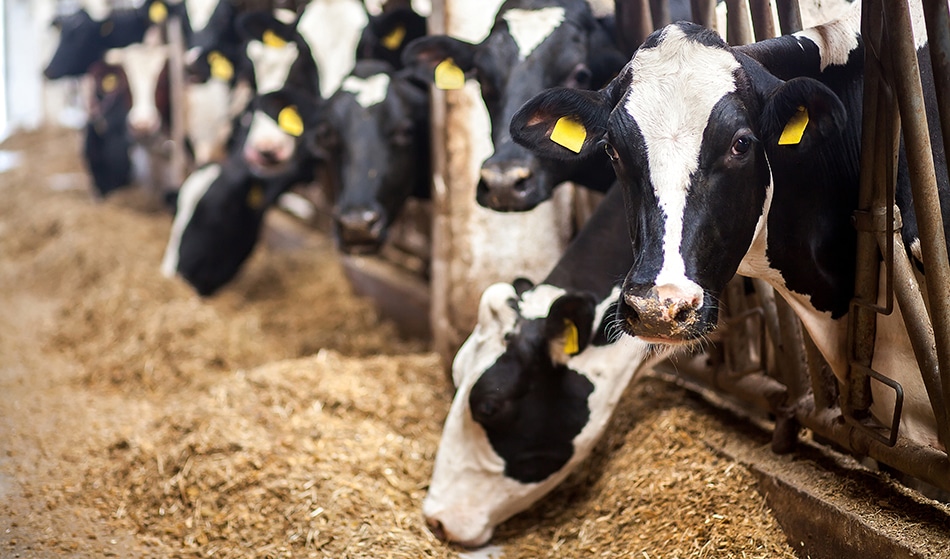Agricultural & Animal Feed Microbiology Testing
Microbiological testing of agricultural and animal feed is a critical component in ensuring food safety, quality, and compliance with international standards. This testing ensures that the products we consume are free from harmful microorganisms such as bacteria, fungi, and molds which can cause illness or even death if not properly managed.
The primary goal of this testing is to provide assurance that agricultural and animal feed products meet strict hygiene requirements set by regulatory bodies like the U.S. Food and Drug Administration (FDA), European Commission, and World Organization for Animal Health (OIE). This ensures public health safety and protects against potential contamination issues that could arise during production, processing, or storage.
Microbiological testing also plays a vital role in Quality Assurance programs designed to maintain the highest standards of quality control throughout the supply chain. By identifying any microbial contaminants early on, corrective actions can be taken immediately, preventing further spread and ensuring product integrity.
The scope of agricultural and animal feed microbiology testing includes a range of tests that are specific to these sectors. These may include but are not limited to:
- Pathogen detection (e.g., Salmonella, E. coli)
- Fungal count analysis
- Bacterial load measurement
- Antimicrobial efficacy testing
The acceptance criteria for these tests vary depending on the intended use of the feed and regional regulations. For instance, feeds destined for human consumption have stricter standards compared to those used in livestock production.
In summary, agricultural and animal feed microbiology testing is essential not only for compliance with legal requirements but also for safeguarding public health and ensuring product quality. It helps establish trust between producers, distributors, retailers, and consumers by providing verifiable evidence of safety and efficacy.
Applied Standards
The application of international standards such as ISO 17025 ensures that laboratories conducting agricultural and animal feed microbiology testing maintain high levels of competence. Compliance with these standards guarantees the reliability, accuracy, and consistency of test results produced by the laboratory.
For instance, when performing pathogen detection tests on feeds intended for human consumption, labs must follow protocols outlined in ISO 18675-1:2013 which specifies procedures for detecting Salmonella spp. in food products. Similarly, testing for fungal counts often adheres to the methods defined by ISO 11290-4:2014.
Adherence to these standards ensures that laboratories can consistently produce accurate results across different batches and samples, thereby enhancing trust among stakeholders. Moreover, it facilitates easier comparison of data between various facilities worldwide, promoting better global collaboration on food safety issues.
Benefits
Conducting thorough agricultural and animal feed microbiology testing offers numerous benefits that extend beyond mere compliance with regulations:
- Promotes Food Safety: Ensures that harmful microorganisms do not enter the food chain, thus protecting public health.
- Enhances Quality Control: Allows for early identification of potential problems in production processes, enabling timely interventions to maintain product quality.
- Safeguards Reputation: Maintains a good reputation among consumers and stakeholders by demonstrating commitment to safety and quality standards.
- Aids Regulatory Compliance: Helps businesses stay compliant with national and international regulations governing food production.
In addition, regular testing can help reduce costs associated with recalls or health issues caused by contaminated products. By catching problems early through microbiological testing, companies avoid costly disruptions to their operations and potential damage to brand reputation.
Use Cases and Application Examples
- New Product Launches: Before introducing a new feed product into the market, thorough testing ensures it meets all necessary safety standards.
- Sourcing Raw Materials: Testing raw materials helps ensure they meet quality specifications before being processed further.
- Patient Monitoring: In some cases, feeds are tested post-production to monitor for any potential contamination issues that may have arisen during processing or storage.
- R&D Projects: Research and development teams use microbiological testing extensively to explore new formulations and processes without compromising safety standards.
These applications highlight the versatility of agricultural and animal feed microbiology testing in various stages of product lifecycle management, from initial concept through final production.





